|
Warming up before exercise is vital, it serves two purposes, to enhance performance and prevent injury. A warmup is a period of time devoted prior to doing physical exercise and usually consists of light cardiovascular exercises combined with stretches. Most recommendations for the length of a warm up is between 10-20 minutes. The idea is to prepare the body physically and mentally for the main activity. Keep the warm up mostly at a low intensity at the beginning and then gradually increase as you progress through the warm-up period. Keeping the muscles warm prior to activity has not only shown to decrease the chances of acute injuries such as muscle strains and overuse injuries but it will also decrease muscle soreness post exercise. There is also a mental component to warming up as mentioned, which is very important. It allows the mind to be prepared for the activity. There is evidence suggesting that mentally preparing/visualising for the activity or event can improve technique, skill and co-ordination. It also prepares the athlete for possible discomfort experienced during activity. If the mind is not ready or not focussed, then physical performance may be limited and could increase the risk of injury. What happens to the body during a warm up?
Tips
https://link-springer-com.simsrad.net.ocs.mq.edu.au/article/10.2165/00007256-198908040-00004 https://link-springer-com.simsrad.net.ocs.mq.edu.au/article/10.2165/00007256-200737120-00006 https://www-sciencedirect-com.simsrad.net.ocs.mq.edu.au/science/article/pii/S0004951407700417 https://www-sciencedirect-com.simsrad.net.ocs.mq.edu.au/science/article/pii/S144024400600051X https://www-tandfonline-com.simsrad.net.ocs.mq.edu.au/doi/abs/10.1080/15438620802310784 https://www-degruyter-com.simsrad.net.ocs.mq.edu.au/downloadpdf/j/hukin.2012.35.issue-1/v10078-012-0079-4/v10078-012-0079-4.pdf https://www.active.com/triathlon/articles/the-real-reason-you-should-warm-up-4682 https://www.verywellfit.com/how-to-warm-up-before-exercise-3119266
0 Comments
Cool it down with Ice or turn up the heat?
One of the most common approaches for clinicians and the public alike, to find pain relief for lower back pain, is to apply heat or cold therapeutics. These take the form of heat packs, hot water bottles, wheat bags as well as ice packs, ice gel packs etc. It’s one of those topics that everyone has an opinion on what works for them (and what will work for you). But what does the research have to say on this topic? Unfortunately there is no high quality research on this subject. There is moderate level evidence to support the use of heat packs for short term symptom relief, and only low levels of evidence that shows minimal benefit from cold therapies for the treatment of lower back pain in acute (< 6 weeks ) and sub-acute patients. There appears to be a benefit of adding exercise to this approach which has ever increasing levels of support in the research. So what can we take away here? Both heat and cold therapies are commonly used low risk interventions for lower back pain. Heat has moderate evidence demonstrating some benefit in pain reduction and this enhanced with adding exercises. French, S. D., et al. (2006). "Superficial heat or cold for low back pain." Cochrane Database of Systematic Reviews(1). 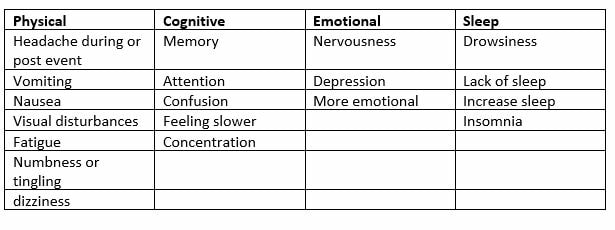 Concussion is a disturbance to normal brain function, rather than a structural injury to the brain. A mild/subtle concussion is when the person is seeing stars and a more obvious one will show function deficits. Biomechanical forces of concussion can be linear or rotational. A concussion can occur due to impact to another player, the playing surface or playing equipment (e.g. ball or goal posts). According to data in the US there is reports of 1.6-3.8 million sports related concussions and unreported rates are 6-10 times more than this figure. Rugby league + union show a prevalence of 3.9 rates per 1,000 player hours (horse racing has the most, between 17-95 rates per 1,000 player hours). NRL in the past 4-5 years in elite competitions reports that between 5-7 concussions will be seen per team per season. Signs and Symptoms that a concussion has occurred Obvious signs may include:
Indications during play:
Management of acute concussion:
Return to play:
Each stage should be a minimum of 24 hours duration, this means that a period of 7-8 days as minimum time for return to contact sport and this period is twice as long for young athletes (18 years and younger). If there is a return of symptoms at any stage, then the athlete should move back to the stage where they were not experiencing symptoms. http://sma.org.au/resources-advice/concussion/ https://playnrl.com/trainer/concussion/ Josh Hallinan - Chiropractor
Tue & Thur 8am - 6pm With pre-season preparation coming to an end and footy season about to start the excitement and anticipations are high. Some simple advice and preparation can enhance your participation in sport regardless of age.
To get off to a flying start here are some helpful tips:
Each season make sure all your protective equipment is in good working order:
In our practice we unfortunately help people when accidents happen. Fortunately for many this is not often or too serious. It is different for children and adults. We commonly attend to lower limb concerns (knee, ankle, thigh, calf). A common ankle sprain, a sore foot or calf strain. These are very common and in most situations not serious. Quick care can get you back to full steam in no time. Things that we often see in practice that lead to these occurrences include:
A good example is a sprained ankle. Imagine the ligaments in your ankle are like an elastic band. If you stretch it too much it will lose its elasticity and not work as well. This is a good way to think about the ligaments in an ankle. Sometimes when they have been hurt, they might not do their job as well and you could continue to roll to the side. The good news is, is that there are some simple and effective exercises that can help and improve stability so that the pesky ankle sprain doesn't occur again. Well, at least not too often. At Health Associates we are here to help you 'do the things you love.' If you have any questions please contact us and our friendly team members can help you. Sources https://sma.org.au/resources-advice/rugby-league/ https://physioworks.com.au/Injuries-Conditions/Activities/rugby-league-injuries https://www.ncbi.nlm.nih.gov/pubmed/7886357 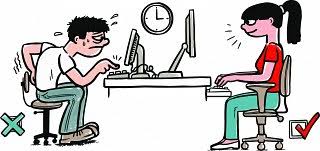 Headaches in short is a continuous pain around the head, face or neck, they can occur in any part of the head, on both sides of the head or in just one location. They are one of the most common medical complaints and can have a disabling effect on a day to day basis like quality of sleep, mood and overall function of the body. Headaches are broadly categorised as either primary or secondary. A primary headache is when the headaches are not caused by another condition or disease. The two most common primary headaches are migraines and tension type headaches. A secondary headache is caused by problems elsewhere in the head or neck, or by a condition. The two most common secondary headaches are cervicogenic and medication overuse headaches. One major contributing factor to both primary and secondary headaches can be upper back tension and poor posture due to the increase time using technology and more demand for people to work longer hours. A poor posture results in certain muscles tightening up or shortening while others lengthen and become weak. It can present with shoulders being rounded and elevated with the head in a forward position. This position is not ideal and leads to an increase in stress on the spine. It also has an effect on the shoulder blades as stability is decreased altering the movement pattern of the upper extremities. It’s not just the upper body that is affected by poor posture, the hips tilt forward increasing the curve in the lower back. This position also affects multiple muscles and places increase stress on both hip joints and lower back which can also have an input into the cause of headaches. There is significant dissatisfaction with headache drug outcomes and the side effects that come with taking these drugs. Headaches are third most common reason for why people seek help from chiropractors. So how does chiropractic care actually help with headaches? Assessment of normal posture, muscle tone, functional movement patterns and how the spine and extremities are moving while taking into account work, hobbies and other daily activities is vital for pin pointing the possible cause of the headache. After this, appropriate treatment, lifestyle changes and patient education is needed. Treatment includes spinal manipulative therapy on areas of the spine that may be stiff or causing pain and soft tissue therapy on muscles that are overactive. Lifestyle changes may be needed such as improved posture at work or during particular activities and implementation of exercises and stretches. Patient education explaining possible variables contributing to the headaches and ways to manage them. There are multiple contributing factors to the cause, pain intensity and frequency of headaches but if a factor such as postural related stress is decreased or removed this can have a positive outcome and possibly stop the headaches altogether. Simple management plans that you can implement straight away include:
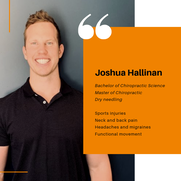 Joshua is a very focused, dedicated and committed practitioner. He graduated from his Masters of Chiropractic in 2018. During his studies he worked as a chiropractic assistant and gained invaluable knowledge and experience. Joshua is committed to health and has achieved significant personal success in sport and through adopting a healthy lifestyle. Appointments available: Tuesday & Thursdays 8am to 6pm (alternate times by appointment) Saturday - By Appointment |
Archives
June 2021
|
|
Contact Details
Call 9542 3330
99A Loftus Ave, Loftus NSW 2232 Hours Monday & Wednesday 8am - 6pm Saturday: 8am - 12pm Early morning or later evening available by appointment Our reception is available for walk-ins on Monday, Wednesday & Saturday. Or by telephone 7 days. |

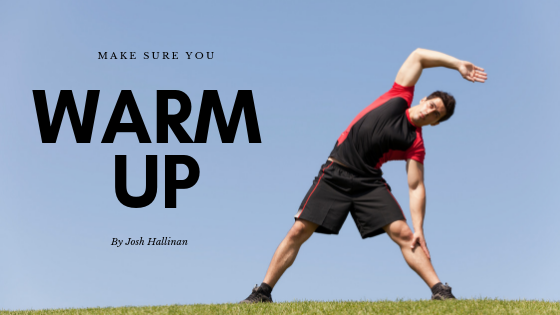
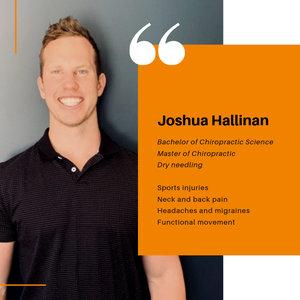
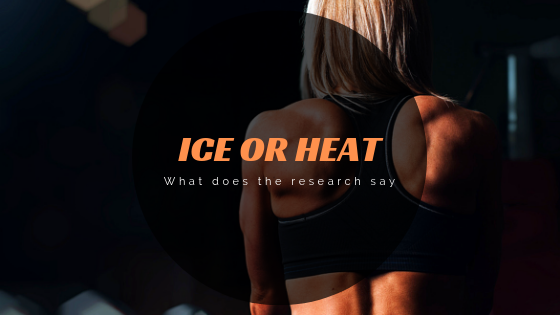
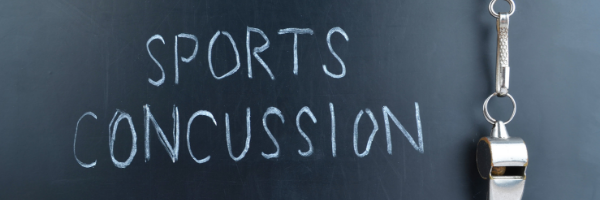

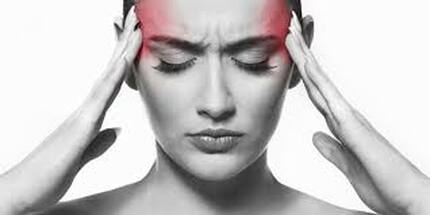
 RSS Feed
RSS Feed